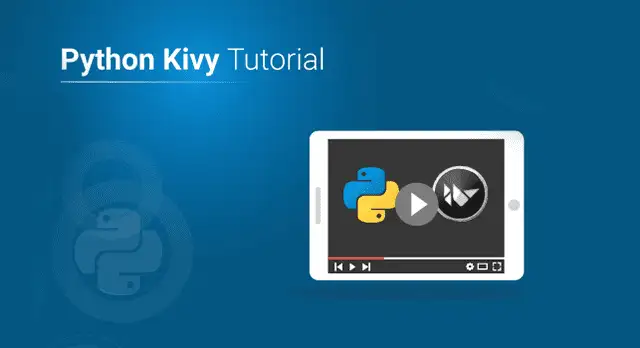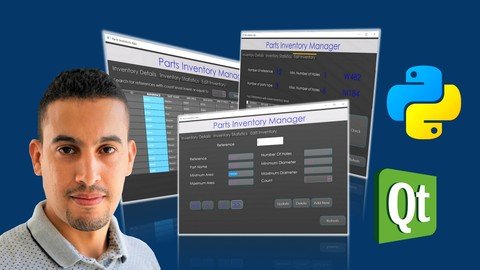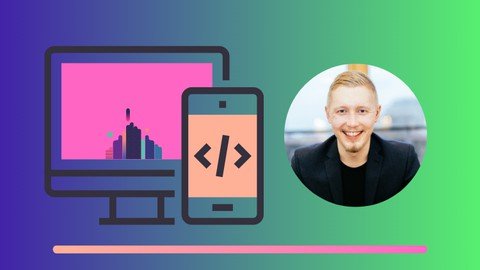In Python, list and tuple are a class of data structures that can store one or more objects or values. A list is used to store multiple items in one variable and…
Python and Your Phone: Let’s Talk About Kivy

python and kivy
With the popularity of smartphones and tablets, everyone wants in on the app-programming action.
Thanks to a new library, Python programmers can get on board and program apps using Kivy.
After confirming you have the prerequisite base knowledge,
this article introduces the key Kivy features and then shows how to handle layout in Kivy and explore some existing examples.
At least once a week, someone is in the Python IRC channel on Freenode asking a very specific question:
How can they use Python to make an app for their Android or iOS phone?
For a long time, the answer was “You don’t.” In order to write an app for Android or iOS, you had to learn either Java or Objective-C, or you had to use a third-party application that relied on a GUI, HTML, and Javascript to create applications.
Python doesn’t run natively on any of the major mobile platforms, so there was no uploading a .py file and simply running it.
A few libraries covered Android but left out iOS.
Python still isn’t included with any of the platforms, but a library has come along that has made it possible to use Python
to create applications that run on iOS, Android, and even on desktops (Linux, Windows, and OSX). That library is Kivy.
What is Kivy?
Kivy is a library that allows you to use Python to create applications for mobile devices and desktops.
It takes your code and creates applications from your logic. Then, with each app and APK, it includes a nearly complete installation of Python.
Write Once, Deploy to Many
The biggest feature of Kivy is the ability to write code once and deploy that code to many platforms.
Everyone with a smartphone has felt the pain of seeing an awesome app come out for one line of phones, but never materialize for their particular phone.
Even more common is when a useful app comes out, but there’s no desktop equivalent.
Not everyone has access to a smartphone, or wants a certain app with them all the time.
There are quite a few games I wish existed on my computer, where I could have keyboard and mouse control, as well as some productivity apps, like task managers or certain alarm tools.
With Kivy, you don’t need a developer for each platform. One developer can create for all of them, and then push a separately packaged application to each app store.
Key Kivy Features
Kivy goes beyond a framework for creating simple apps for your phone or desktop.
It can interface with the phone’s hardware and do advanced rendering. It has access to rendering engines.
It can do so much more than a simple web app could do.
- Camera: There are built in adapters for smartphone cameras. This is one of the first requirements that will have me jumping over to creating a native app, rather than creating a responsive website.
- Though there are, in theory, some HTML5 inputs for cameras, the coverage for this in browsers is spotty at best.
- Video: Kivy includes modules for reading and playing videos. True, this can be done through a web app, but the experience can sometimes be shaky. Older phones might try to play the video without taking up the whole screen, or the memory usage might be higher than it should be.
- Multitouch and gestures: Kivy has a robust module for input, allowing for multitouch and gestures.
- Visual effects and OpenGL: Because Kivy has access to OpenGL, it can perform a large array of visual effects and do quite a bit of rendering.
- Kivy also uses PyGame, so creating games becomes much easier (though you do have to rewrite existing PyGame code for Kivy).
- PyGame comes with modules for drawing shapes, rendering, dealing with colors, and playing music (as well as blowing things up, naturally).
- Asynchronous network requests: One important feature of any native app, at least for people like me who travel in and out of network areas, is the ability to finish requests when a network is available.
- I like being able to work on my phone while in a tunnel, then have it sync my work to the cloud when I hit a station.
- UI features: Kivy comes with a number of widgets and controls that are beautifully designed.
- This can be a real benefit to your project if you’re trying to prototype quickly, and don’t yet have access to a designer.

Example program
It doesn’t take very many lines of code to create a Kivy program. Here’s a sample ‘Hello, World’ application from the documentation:
import kivy
kivy.require('1.0.6') # replace with your current kivy version !
from kivy.app import App
from kivy.uix.button import Button
class MyApp(App):
def build(self):
return Button(text='Hello World')
if __name__ == '__main__':
MyApp().run()ℹ Note
“Can I use Kivy to learn Python?” is another question I get quite a bit. After playing with it (and teaching more than a few beginners), I believe my answer is ‘No.’ This is not a toy framework. It’s here to do some serious work, and though it’s a heck of a lot easier than learning Java or Objective-C, it’s still not for the beginner.
What You Need to Know to Successfully Develop python and kivy Apps
You should have a pretty solid grasp on Python. Learning Python while trying to learn Kivy might end up confusing the beginner. You don’t need to be an expert Python programmer, but you should be comfortable delving into docs and using APIs.
You should also be familiar with MVC patterns. You can write a Kivy program without them, but it might drive you slowly mad as the program grows.
Finally, while you don’t need to know how to program on Android or iOS, you should know some of the high-level concepts, like what devices are common with each OS, and how to run emulators. A run through a high-level tutorial should be enough to get you comfortable with what’s to come. You should also take some time to get comfortable with some of the APIs that Kivy doesn’t cover, like GPS or notifications.
If you already program on Android or iOS, a bit of a perspective shift might be needed. Kivy creates single-window apps. There are ways to simulate multiple windows, but this can be confusing to some when they first move over.
Layout in Kivy
Kivy comes with a special language for defining layout. This allows you to keep your logic and presentation separate. Kv (the layout language) isn’t complex, but you should review the documentation briefly before diving in.
A Kv file looks something like this:
<ClassName>:
LayoutType:
WidgetType:
pos: self.center_x - 5, 0
size: 10, self.height
LayoutType2:
font_size: 70
center_x: root.width / 4
top: root.top - 50
text: "0"
So WidgetType is within LayoutType, and LayoutType2 is right after LayoutType. These are all stored in a view called ViewName, which can be reused throughout the application by different views. As for the values to the left of the colon, those are Python statements. They might be as simple as a single value, or they might be a calculation of some kind.
There are a number of layouts and widgets available out of the box:
- Accordion: Expands or collapses items through touch or clicks
- ActionBar and ActionItems: Collects items you might want to give the user quick access to.
- BoxLayout: Arranges children in a box, horizontally or vertically.
- Bubble: Brings up a bubble with possible actions or information (like what is at a location, or giving the option to copy or paste the information)
- Button: Just what it sounds like! A button!
- Carousel: Allows the user to swipe between slides
- And many more!
Examples in the Wild
Same code is all well and good, but where is Kivy being used in production, by actual companies?
Bargenius is an app made for single-use tablets, specializing in what foods pair with what drinks. Rather than give a visitor a paper menu, they can be given a tablet that offers additional details about the food being offered, and suggest what drinks might go with their selection.
Particle Panda HD is useful for exploring what Kivy can do with its graphics libraries. With it, the user can create particle effects that can then be exported, so they can be used in other applications. This application is completely free, so make sure to check it out if you’re interested in rendering graphics or high-end effects.
ProcessCraft is a business application geared towards individuals who need to model complex business data, but don’t want to train staff to use complex notation.
Finally, you can look at the source code of three games written in Kivy and submitted for a 2012 contest: Deflectouch uses Kivy’s multitouch capabilities, FishLife explores industrial waste and its impact on sea life, and memoryKivy is a simple memory game.
For a more extensive list of Kivy examples, check out the official list on Github.
Do I Have to Pay Them?
You do not! Kivy is open source (MIT licensed), and does not require any payment, even if you end up making an app that generates money through sales or ads. They don’t even require a link to their module, and you can feel free to fork them on GitHub.
Just because you don’t have to pay Kivy doesn’t mean a piper doesn’t need to be paid. Developer licenses still need to be purchased for each market where you want to publish your app. Here are the current rates as of November 2013:
- iOS/OSX: $99 a year (unlimited apps)
- Android (Play): $25 lifetime (unlimited apps)
- Android (Amazon): Free (unlimited apps)
- Windows store: $19 a year (unlimited apps)You should also note that, just because you made an app doesn’t mean it will get accepted. For each store, apps are reviewed (though some of the stores are more thorough than others), and rejection is always a possibility.
[ufwp search=”python” items=”6″ template=”grid” grid=”3″]
Where You Can Learn More in python and kivy
Obviously, the best place to start is kivy.org! There, they have documentation, example projects, and tutorials.
Ben Rousch did an excellent tutorial at PyOhio, showing off what Kivy can do as well as building an app live. You can watch that video on PyVideo.org. If you’re not interested in the demos, go ahead and skip to 14:00. I was next door, and I can attest to the fact that it was standing room only, and one of the most talked-about tutorials of the conference.
On Android, I recommend installing the Kivy Showcase app. It will give you an idea what Kivy is capable of, and provides a handy reference for UI elements. Showcase is also available for the desktop by downloading the Kivy source and looking in the examples folder.
Kivy.org also hosts a feed of all of recent blog posts about Kivy at http://kivy.org/planet/. If you’d rather talk to some of the developers and users, you may want to check out their IRC channel, #kivy, on Freenode.
I hope that if you do decide to make an app with Kivy, you drop by to show it off! Kivy is building a friendly and eager community around its framework, and we would love to see what you do with it!







